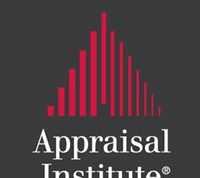Logan River watershed receives portion of $1m grant for water quality improvement projects
(Denver, Colo. ) – (RealEstateRama) — The U.S. Environmental Protection Agency (EPA) has awarded $1,004,260 to the Utah Department of Environmental Quality (UDEQ) to help protect human health and the environment through a Nonpoint Source Program Clean Water Act Section 319 cooperative agreement. This grant is given to states to implement environmental programs that address nonpoint source pollution in surface and groundwater in order to improve and protect water quality.
“EPA is partnering with states to protect and restore watersheds, streams and groundwater,” said EPA Administrator Scott Pruitt. “Investments like this grant, allow states to support local watershed projects, improving water quality while helping to grow the economy.”
Under UDEQ’s Nonpoint Source program, a targeted basin approach is used to provide funding on a rotating basis to one of six basins throughout the state. This year’s targeted basin is the Bear River Basin in which the Logan River is located. The lower reach of the Logan River will be the focus of several projects designed to reduce phosphorus loading that is detrimental to the water quality in this reach and those downstream. “The nonpoint source program provides an important mechanism to work directly with landowners to improve water quality and local communities,” said Erica Gaddis, Director of UDEQ’s Division of Water Quality. “We appreciate EPA’s annual support of this program since the early 1990s and we look forward to continuing this partnership into the future.”
Also included is funding to support local watershed coordinators in seven basins around the state, funds for volunteer monitoring efforts, and funding to educate K-12 teachers and students. The basic goal for all the projects is to improve water quality and restore the beneficial uses of waters impacted by nonpoint source pollution. The program works through a set of overarching principles that emphasize voluntary and incentive-based participation, locally-led projects, partnerships, measurable water quality improvement and effective and efficient program administration. For more information, visit http://www.utahcleanwater.org/
Nonpoint source pollution encompasses a wide range of sources that are not always subject to federal or state regulation. These sources include agricultural runoff, unpermitted urban runoff, abandoned mine drainage, failing onsite disposal systems, and pollution caused by changes to natural stream channels. Congress enacted Section 319 of the Clean Water Act in 1987, establishing a national program to control nonpoint sources of water pollution. Through Section 319, the EPA provides states, territories, and tribes with guidance and grant funding to implement their nonpoint source programs and to support local watershed projects to improve water quality. Collectively this work has restored over 6,000 miles of streams and over 164,000 acres of lakes since 2006. Hundreds of additional projects are underway across the country.
You can learn more about successful nonpoint source projects at https://www.epa.gov/nps/nonpoint-source-success-stories




